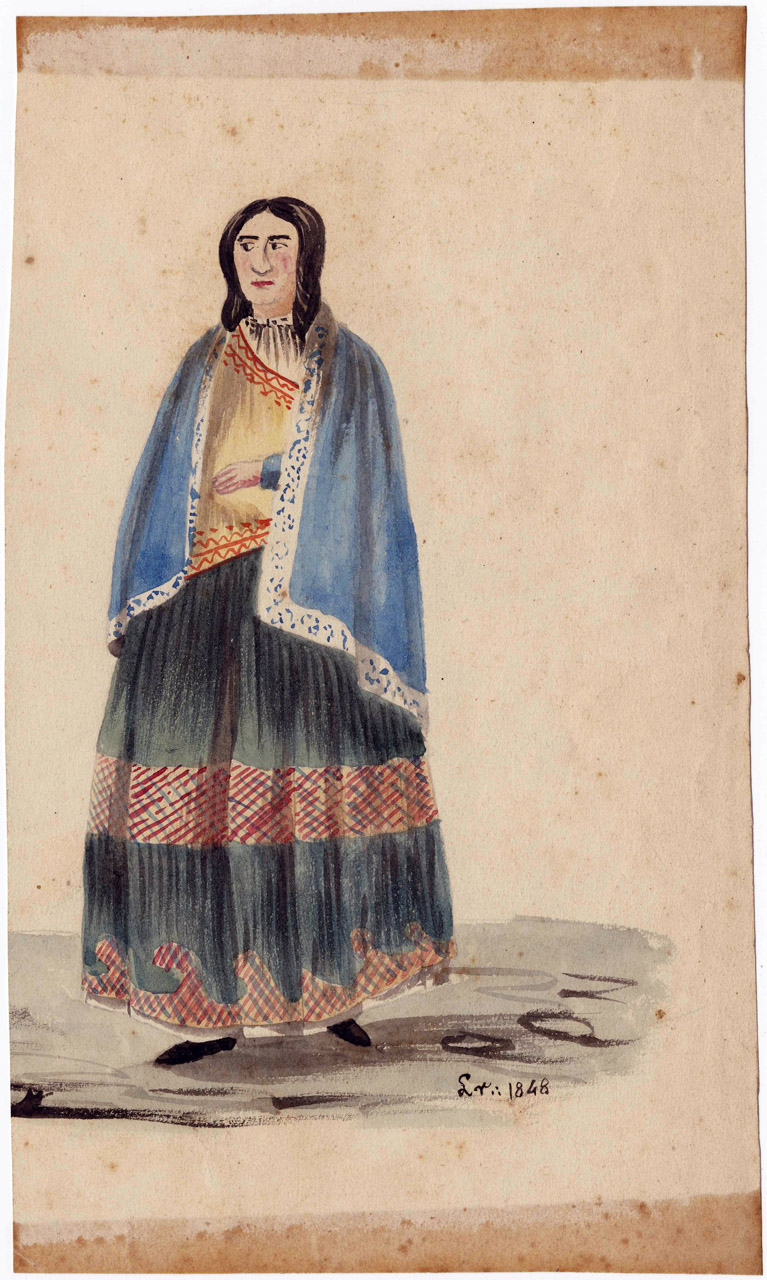Costumbrismos, ca. 1848: Unidentified [Woman with Blue Shawl].
Signed “LV,” 1848, watercolor.
Costumbrismos are literary and artistic depictions of the peoples in South America during the nineteenth century. Costumbrismas, such as Peruvian Pancho Fierro and French diplomat Léonce Angrand, illustrated costumes and culture of various ethnic stereotypes in pencil and watercolor that were used in travellers’ books and albums. University of Miami Art History Professor Rebecca Brienen explains its history: “With their roots in costumes books of the Renaissance, images of ethnic types, such as the 19th century drawings of men and women from the Andes in this exhibition, have a long history in Western Art. Reproduced on maps but especially in natural history publications, such images were widely circulated.” Publications include Theodor de Bry’s Grand Voyages, which chronicles early expeditions to the New World with illustrated maps and images that portray the costumes and cultures of natives. The exhibited prints belong to a collection of ten costumbrismos, eight of which contain Italian character description.
This particular costumbrismo possibly portrays a cholita—whose identity is more loosely described as an indigenous urban woman, of “mixed racial and cultural origins.” Florida International University History Professor Bianca Premo believes that the character’s “combination of European clothing (shawl possibly trimmed with lace and shirt that appears to be European-style linen) and her indigenous fashion (braided hair and pollera, multi-layered skirt) are indicative of her cholo identity.” Her lighter skin also implies that she is perhaps a mestiza (half-Spanish, half-Indian).
Italian translation by University of Miami professor Giavanna Pompele.
